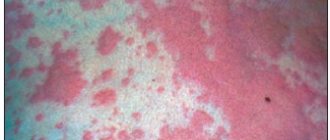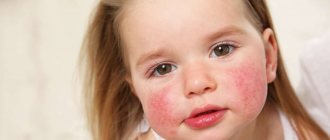It’s good to be healthy, but unfortunately, we cannot always boast of an excellent state of mind and body. Everyone has heard about hives. This is a fairly common allergic disease that can occur at any age. Ruthless statistics say that 15-20% of the population of our planet have observed at least one case of urticaria throughout their lives.
Urticaria is a widespread disease that manifests itself in the form of characteristic rashes, similar to nettle burns, on the skin and mucous membranes and is very rarely accompanied by itching.
In childhood, each of us was inadvertently burned by nettles, so it is quite easy to remember the symptoms of this disease. Hippocrates was one of the first to talk about this seemingly simple disease: he drew an analogy between urticarial rashes in people suffering from urticaria and problems of the gastrointestinal tract.
Causes of urticaria
Very often, the cause of hives is an allergic reaction of the body to certain substances or allergens. There are different ways that allergens enter the body, depending on which urticaria occurs:
- food (citrus fruits, seafood, pork, nuts, eggs, tomatoes, berries are the culprits),
- insect (as a result of insect bites), including those resulting from infection with parasites (helminths, ticks),
- medication (for penicillin, aspirin, codeine),
- result of stress
- toxic allergies (to dust, pollen),
- as an individual reaction to cold, heat, prolonged ultraviolet irradiation.
In all of the above cases, you need to consult an allergist.
Urticaria in adults, symptoms and treatment with prebiotics
Many scientific studies point to the important role of prebiotics and probiotics in the treatment of allergies. It turns out that restoring the colon microflora reduces the formation of protein allergens, thereby preventing autoimmune inflammatory reactions.
How to treat hives? According to modern concepts, the intestinal bacterial flora is a full-fledged organ of the immune and digestive systems of our body. We spend about 10% of all the energy we receive from food to ensure the vital activity of “beneficial bacteria”.
Prebiotics are prescribed to stimulate the growth of “beneficial” bacteria living in the intestines.
Classification of the disease
There are two forms of urticaria:
- acute (duration is about 6 weeks),
- chronic (over 6 weeks).
- There are different types of immunological urticaria:
- Urticarial vasculitis.
- Allergic
- Compliment addict.
- Autoimmune.
- Physical is divided into:
- mechanical: vibration, dermographic;
- temperature: thermal or cold contact;
- allergies that develop under the influence of other extraneous factors.
- There are also the following forms of urticaria:
- Contact.
- Aquagenic.
- Adrenergic.
- Idiopathic.
- Urticaria caused by non-IgE-mediated mast cell degranulation.
- Cholinergic.
- Drug-induced urticaria with development mechanisms different from those previously described.
Diagnostics
Even twenty years ago, doctors diagnosed 90% of their patients with allergic rashes as “idiopathic urticaria” - after all, doctors did not have all the necessary techniques in their arsenal to determine the causes of allergies.
Nowadays, skin tests, special tests to determine the allergen, immunological blood tests to determine the allergic nature of the disease and other modern techniques are carried out, allowing the doctor to make an accurate diagnosis and prescribe effective treatment.
If the allergen cannot be identified, the patient is referred for a consultation with an ENT doctor, dermatologist or urologist to identify diseases that may manifest as idiopathic urticaria. Specialists prescribe a number of additional studies, such as ultrasound, endoscopy and determination of the level of hormones of the endocrine glands in the blood.
Symptoms of urticaria
- Blisters can appear as pinpoint or large-focal, sometimes they merge with each other.
- A blister, the primary element in the manifestation of a skin rash, is a local swelling of the papillary dermis, which occurs as a result of accelerated blood flow, vasodilation, and increased vascular permeability.
- Blisters may also appear as cavityless exudative ephemeral elements. Dense, swollen, bright pink in color, they can rise above the skin level and have different shapes (large scalloped, rounded, etc.), different sizes (diameter - from 0.5 to 10-15 cm) and often a pale area in the center. Blisters may disappear without a trace (even after a few minutes).
- Sometimes there may be a burning sensation or a blister may be accompanied by unpleasant itching of the skin.
- Inflammation can occur anywhere. But most of all skin rashes appear in places where skin and clothing come into close contact: under straps, belts, and suspenders.
- The duration of the visual presence of the rash can range from several minutes to a day.
- In half of the patients, urticaria is accompanied by angioedema (Quincke's edema).
If swelling and rash have spread to the surface of the mucous membranes of the gastrointestinal tract, nausea and vomiting have appeared, this indicates a possible threat to human life and requires immediate intervention by a specialist.
Very often, urticaria is not treated and the disease is not given due importance. However, it is important to know that hives can be a signal of the appearance of diseases of the internal organs or some other serious infection in the body.
Do not forget about the predisposition to urticaria. This will be indicated by increased sensitivity of the skin and white stripes that remain after light scratching (white dermographism). If hidden infections are detected in time, the immune system will be able to function normally. It is important to assess the condition of the internal organs, being aware that if their functioning is disrupted, skin diseases may occur.
Urticaria in adults. Symptoms and treatment
Intense itching often becomes only the “first sign” of the disease. Then redness of the skin and flat red rashes appear. The rashes can merge, forming an area of skin inflammation of various shapes. In the acute period of the disease, body temperature may rise, sometimes up to 39°C, weakness, poor appetite and headache are noted.
First of all, treatment in adults involves reducing, and preferably completely eliminating, contact with allergens. For example, if you are allergic to tangerines, then they are taboo for you!
After taking antihistamines, the symptoms of urticaria in adults most often “subside”, and after a few days there is no trace of the blisters.
The following remedies can be used to treat urticaria at the discretion of the doctor:
- antihistamines;
- in severe cases - glucocorticoids;
- in case of a recurrent process, a course of immunotherapy is prescribed;
- Enterosgel intestinal sorbent will reduce intoxication of the body and remove allergens from the body;
- in case of Quincke's edema and the development of anaphylaxis, an adrenaline solution is administered;
- local treatment in adults is aimed at reducing itching and skin inflammation;
- at home, you can remove allergens from the surface of the skin using a shower, bath and wet wipes.
In case of urticaria provoked by a certain drug, this drug should be prohibited to the patient for life.
At home, you can reduce the likelihood of contact with household dust, animal hair and plant pollen through daily wet cleaning.
Does urticaria have complications and consequences?
The main health hazard is Quincke's edema - generalized urticaria, manifested by extensive swelling of the skin and subcutaneous tissue. Swelling occurs on the face, neck, and scrotum. Swelling of the larynx develops, which is manifested by hoarseness, dry cough and an attack of suffocation.
How to treat hives? When the first symptoms of the development of Quincke's edema appear, you should remove tight outer clothing, ensure an influx of fresh air if possible, give the patient Enterosgel sorbent and call an ambulance.
For what indications is specialist consultation necessary?
Consultation with an allergist is necessary in case of exacerbation of chronic recurrent urticaria, as well as in intermittent acute form of the disease. The causes of diseases associated with urticaria can be determined by an allergist. It is also necessary to consult a dermatologist, rheumatologist, parasitologist, endocrinologist and, possibly, an oncologist.
Brief description of some clinical forms of urticaria
Allergic urticaria
- Most often acute or episodic
- The most common allergens are food, medications, insect poison, latex
- Patients also have other manifestations of allergy pathology, allergic heredity
- Positive results of allergological examination
- Elimination measures are effective
Autoimmune urticaria
- Current type of chronic idiopathic urticaria
- Frequent presence of autoimmune thyroiditis and thyroid diseases in the family
- Severe general symptoms (weakness, malaise, gastrointestinal dysfunction)
- Presence of histamine-releasing anti-Fcε-RI antibodies and anti-IgE antibodies
- Positive test with autoserum
Cold urticaria
- It can be acquired (idiopathic and arising against the background of an underlying disease, for example, viral hepatitis, lymphoproliferative disease, etc.) and congenital.
- The appearance of itching, burning, hyperemia, urticarial rash, angioedema in areas of the skin exposed to low temperatures
- Symptoms persist for 20-30 minutes and disappear without a trace after the patient warms up
- exposed
Delayed pressure urticaria
- Characterized by the appearance of swelling and blisters in pressure areas 4-6 hours after exposure.
- Characterized by resistance to treatment
Heat urticaria
- Occurs from exposure to heat.
- Hereditary local thermal urticaria has been described, characterized by a delayed (4-6 hours) appearance of elements after local thermal exposure.
- May be accompanied by systemic circulatory disorders and convulsions
Solar urticaria
- Occurs under the influence of ultraviolet radiation
- Blisters appear on exposed areas of the body after exposure to the sun; there may be fixed light urticaria
- The disease can be primary (idiopathic photic urticaria) and
- Secondary light urticaria may be associated with the action of drugs (tetracyclines, sulfonamides, quinolones) or associated with an underlying disease (SLE, thyroiditis, gastrointestinal dysfunction).
Dermographic urticaria
- The appearance of blisters due to mechanical irritation of the skin
- Itching precedes the appearance of rashes
- The phenomenon of dermographism is reproduced by intense line irritation of the skin with a blunt object (spatula)
Vibration urticaria/angioedema
- There are hereditary (autosmal dominant type) and acquired forms
- Characterized by the appearance of a rash and swelling in areas exposed to vibration
- Rash and swelling appear 4-6 hours after exposure to vibration and persist for up to 24 hours.
- The disease is caused by nonspecific degranulation of mast cells
Aquagenic urticaria
- The rash occurs only after contact with water of any temperature
- A rash with severe itching occurs immediately after contact with water
- Characterized by the appearance of small blisters surrounded by erythematous spots
Cholinergic urticaria
- Occurs more often in young people
- Characterized by the appearance of pale pink blisters with a diameter of 1-5 mm, often surrounded by erythema, the rash is generalized
- Provocative factors include exercise, stress, sweating, and hot showers.
- May be accompanied by systemic manifestations (hot flashes, weakness, rapid heartbeat, headache, abdominal pain, shortness of breath
- Can be reproduced by subcutaneous administration of acetylcholine
Adrenergic urticaria
- Rarely seen
- Characterized by the appearance of small papules with a white halo
- Triggered by stress
- Can be reproduced by intradermal injection of epinephrine
Anaphylaxis/urticaria caused by physical exertion
- Characterized by the appearance of skin itching, rashes, angioedema during or immediately after physical activity
- May be accompanied by systemic manifestations, including bronchospasm, laryngeal edema, vascular collapse
- A provoking factor may be the consumption of certain foods (alcohol, apples, shrimp, tomatoes, nuts, celery) before physical activity.
Enterosorbents for urticaria in adults. Symptoms and treatment
Enterosgel cleanses the intestines of allergens and removes them from the body, reducing the symptoms of the disease. The drug is effective for almost any form of disease in children and adults. Enterosgel has a beneficial effect on the mucous membrane of the large intestine, protecting it from inflammation and has a beneficial effect on the intestinal microflora.
The use of enterosorbents is a safe and effective method of treatment in children. Enterosgel allows you to quickly reduce the exacerbation of urticaria, concomitant diseases and prevent the development of complications.
The use of Enterosgel in pediatric practice has demonstrated the pronounced clinical effectiveness of the drug and the absence of side effects. Doctors believe that Enterosgel occupies a leading place among various drugs to combat intoxication in children and adolescents.
Additional research:
- skin test when using autologous serum;
- rheumatological tests;
- nasal swab for the presence of eosinophils;
- TSH, T3, T4, antibodies to thyroid peroxidase and thyroglobulin;
- culture of throat flora, throat culture for sensitivity to antibiotics and bacteriophages;
- stool analysis for sensitivity to bacteriophages and dysbacteriosis;
- antibodies to helminths, as well as roundworms and lamblia;
- coprogram;
- HBsAg, AT to hepatitis C, RW, AT to HIV;
- ultrasound examination of the thyroid gland;
- Ultrasound of the abdominal cavity;
- consultation with a gastroenterologist to identify H. pylori, endoscopy, consultation with a neurologist, ENT specialist (VSD);
- ECG;
- if urticarial vasculitis is suspected, a dermatovenerologist performs a skin biopsy.
Allergy to tap water
The appearance of allergy symptoms to tap water is usually due to the presence of impurities in its composition - primarily chlorine, which is used to disinfect it. Symptoms of an allergy from tap water are usually not much different from the reactions described above.
You can avoid manifestations of an atypical response of the immune system to the contents of water pipes by minimizing contact of water with the skin or installing a high-quality filter (for example, a reverse osmosis system). You can also use it only in boiled form - in this state, the effect of chlorine on the skin can be minimized.
In many cities there are so-called pump rooms - structures built above the outlet of water from the ground. Moreover, we are talking not only about resort areas where there are mineral waters - a pump room can also be installed above an artesian well, that is, in almost any city.
Sometimes the appearance of rashes, dryness and other symptoms of an atypical skin reaction to water is not caused by the composition of the water, but by the means used to wash your hands, head, and body. Therefore, it is recommended to abandon the usual scented shower gels, soaps and lotions and use more gentle and delicate products - for example, La Cree emulsion, shampoos and rinses.
Recommended drugs that are used to treat urticaria
- Antihistamines. The Gorbakov Clinic uses new drugs that do not have side effects.
- Leukotriene receptor antagonists.
- Histamine H2 receptor blockers.
- Immunosuppressants.
- Glucocorticoids.
- Slow calcium channel blockers.
- Androgens.
- Combination drugs that include M-anticholinergic drugs.
- Antidepressants.
- Medicines that are used in rheumatology.
- Plasmapheresis.
- Intravenous immunoglobulins.
Specialists at the Gorbakov Clinic individually determine the patient’s treatment tactics in each individual case. A systematic approach to treatment will help the patient get rid of the problem for a long time or forever.
Allergy to sea water
An allergy to water on the face and other parts of the body that appears after swimming in the sea can occur for the following reasons:
- The composition of sea water is characterized by the presence of a number of salts and minerals, which can cause allergies.
- At certain periods algae blooms, which enrich the sea with certain organic substances.
- The presence of industrial waste in the water cannot be ruled out (especially if you swim near ports).
- Many microorganisms live in sea water, the waste products of which can cause an allergic reaction.
To avoid undesirable consequences after swimming in the sea, you need to determine which of these factors caused the atypical response of the immune system. It is quite possible that if you swim at another resort, undesirable consequences can be avoided.
Features of the treatment of urticaria at the Gorbakov Clinic:
- Individual patient training at the immuno-school and asthma school.
- Treatment begins on the first day of treatment.
- A comprehensive examination is carried out on the day of treatment.
- Return to normal life.
- Rapid relief of a serious condition occurs within 1-3 days.
Urticaria is an extremely common allergic disease, affecting one in five people worldwide. Most often, people do not attach importance to the symptoms and rarely consult a doctor if they notice characteristic rashes. However, urticaria is often a signal of the presence of serious diseases in the body. Contact a specialist at the first symptoms of allergic urticaria and undergo the recommended comprehensive examination.
It’s good to be healthy, but unfortunately, we can’t always boast of an excellent state of mind and body. Everyone has heard about hives. This is a fairly common allergic disease that can be acquired at any age. Ruthless statistics say that 15-20% of the population of our planet have observed at least one case of urticaria throughout their lives.
Urticaria is a widespread disease that manifests itself in the form of characteristic rashes, similar to nettle burns, on the skin and mucous membranes. Rarely accompanied by itching.
In childhood, each of us was inadvertently burned by nettles, so it is quite easy to imagine the symptoms of this disease. Hippocrates was one of the first to talk about this seemingly simple disease. He drew an analogy between urticarial rashes in people suffering from hives and problems of the gastrointestinal tract.
Causes of urticaria
Very often, the cause of hives is an allergic reaction of the body to certain substances (allergens). There are different ways that allergens enter the body, depending on which urticaria occurs:
- food (citrus fruits, seafood, pork, nuts, eggs, tomatoes, berries or other products are the culprits);
- insect (as a result of insect bites), including those resulting from infection with parasites (helminths, ticks);
- medication (for penicillin, aspirin, codeine and other drugs);
- result of stress;
- toxic allergy;
- as an individual reaction to cold, heat, prolonged ultraviolet irradiation.
In all of the above cases, you need to consult an allergist.
Classification of the disease
There are two forms of urticaria:
- acute (duration is about 6 weeks);
- chronic (over 6 weeks).
There are different types of immunological urticaria:
- urticarial vasculitis;
- allergic;
- compliment dependent;
- autoimmune.
Physical urticaria is divided into:
- mechanical urticaria:
- vibration;
- dermographic;
- temperature urticaria:
- thermal;
- cold contact;
- allergies that develop under the influence of other extraneous factors.
There are also such forms of the disease:
- contact;
- aquagenic;
- adrenergic;
- urticaria, which is caused by non-IgE-mediated degranulation of mast cells;
- cholinergic;
- drug-induced urticaria with development mechanisms different from those previously described;
- idiopathic (if the cause of urticaria is not established);
Symptoms of urticaria
A blister is the primary element in the manifestation of a skin rash. It is a local swelling of the papillary dermis, which occurs due to accelerated blood flow, vasodilation and increased vascular permeability.
Blisters can be either pinpoint or large-focal, sometimes they merge with each other.
Blisters may also appear as cavityless exudative ephemeral elements. Dense, swollen, bright pink in color, they can rise above the skin level and have different shapes (large scalloped, rounded, etc.), different sizes (diameter - from 0.5 to 10-15 cm) and often a pale area in the center. Blisters may disappear without a trace (even after a few minutes).
There may be a burning sensation or an unpleasant itching sensation.
The duration of the visual presence of the rash can range from several minutes to a day.
In half of the patients, urticaria is accompanied by angioedema (Quincke's edema).
If swelling and rash have spread to the surface of the mucous membranes of the gastrointestinal tract, nausea and vomiting have appeared, this indicates a possible threat to human life and requires immediate intervention by a specialist.
Very often, urticaria is not treated and the disease is not given due importance. However, it is important to know that hives can be a signal of an infection in the body.
Do not forget about the predisposition to urticaria. This will be indicated by increased sensitivity of the skin and white stripes that remain after light scratching (white dermographism). If hidden infections are detected in time, the immune system will be able to function normally. It is important to assess the condition of the internal organs, being aware that if their functioning is disrupted, skin diseases may occur.
Brief description of some clinical forms of urticaria
Allergic urticaria:
- often occurs acutely or episodically;
- the most common allergens are food, medications, insect poison, latex;
- Patients also have other manifestations of allergopathology, the so-called allergic heredity;
- the results of the allergy examination are positive;
- Elimination measures are effective.
Autoimmune urticaria:
- characterized by a course of chronic idiopathic urticaria;
- frequent presence of autoimmune thyroiditis and thyroid disease in the family;
- severe general symptoms (weakness, malaise, gastrointestinal dysfunction);
- the presence of histamine-releasing anti-Fcε-RI antibodies and anti-IgE antibodies;
- the autoserum test is positive.
Cold urticaria:
- can be acquired or arising against the background of an underlying disease (for example, viral hepatitis, lymphoproliferative disease and others) and congenital;
- the appearance of itching, burning, hyperemia, urticarial rash, angioedema in areas of the skin exposed to low temperatures;
- symptoms persist for 20-30 minutes and disappear without a trace after the patient warms up.
Delayed pressure urticaria:
- characterized by the appearance of swelling and blisters in pressure areas 4-6 hours after exposure; Inflammation can occur anywhere. But most often, skin rashes appear in places where skin and clothing come into close contact: under straps, belts, and suspenders.
- characterized by resistance to treatment.
Heat urticaria:
- occurs from exposure to heat;
- hereditary local thermal urticaria has been described, characterized by a delayed (4-6 hours) appearance of elements after local thermal exposure;
- may be accompanied by systemic circulatory disorders and convulsive syndrome.
Solar urticaria:
- occurs under the influence of ultraviolet radiation;
- blisters appear on exposed areas of the body after exposure to the sun, there may be fixed light urticaria;
- the disease can be primary (idiopathic light urticaria) and secondary;
- secondary light urticaria can be associated with the action of drugs (tetracyclines, sulfonamides, quinolones) or with an underlying disease (systemic lupus erythematosus, thyroiditis, gastrointestinal dysfunction).
Dermographic urticaria:
- the appearance of blisters due to mechanical irritation of the skin;
- itching precedes the appearance of rashes;
- the phenomenon of dermographism is reproduced by intense line irritation of the skin with a blunt object (spatula).
Vibration urticaria/angioedema:
- there are hereditary (autosomal dominant type) and acquired forms;
- characterized by the appearance of a rash and swelling in areas exposed to vibration;
- rash and swelling appear 4-6 hours after exposure to vibration and persist for up to 24 hours;
- the disease is caused by nonspecific degranulation of mast cells.
Aquagenic urticaria:
- the rash occurs only after contact with water of any temperature;
- the rash appears instantly;
- presents as small blisters surrounded by erythematous spots.
Cholinergic urticaria:
- occurs more often in young people;
- characterized by the appearance of pale pink blisters with a diameter of 1-5 mm, often surrounded by erythema;
- the rashes are generalized;
- provocative factors are physical exercise, stress, sweating, hot shower;
- may be accompanied by systemic manifestations (hot flashes, weakness, rapid heartbeat, headache, abdominal pain, shortness of breath);
- can be reproduced by subcutaneous administration of acetylcholine.
Adrenergic urticaria:
- rare;
- characterized by the appearance of small papules with a white halo;
- triggered by stress;
- can be reproduced by intradermal injection of adrenaline.
Urticaria in children. Symptoms and treatment
The causes of allergic reactions in children are the same as in adults. However, for the first time in his life, a child most often encounters food allergens.
Urticaria (ICD -10 L50) is characterized by itching, blisters and fever.
Itchy skin makes children restless and disrupts their sleep and appetite. The appearance of skin rashes is a reason to show the child to the pediatrician, because various infectious diseases also occur with rashes: for example, chicken pox, measles, scarlet fever, herpes and streptoderma.
Only a doctor can make an accurate diagnosis and prescribe the correct treatment. If swelling appears on the face, neck or genitals, you should call an ambulance!
Treatment of urticaria in children
Comprehensive treatment of urticaria includes antiallergic drugs, Enterosgel sorbent, and dietary nutrition. Stopping contact with the allergen will make it easier for doctors and reduce the child’s discomfort.
How to treat urticaria in infants? A nursing mother should first of all adhere to a strict diet so that food allergens of various foods - fish, citrus fruits, eggs, chocolate and others - do not get into breast milk. Keeping a food diary for a nursing mother will reduce the likelihood of hives in children.
Symptoms and treatment
The child does not eat well, cries, red spots and blisters appear on the skin, and a fever is possible. Treatment is symptomatic, that is, aimed at reducing allergy symptoms. For urticaria in children, dietary nutrition, Enterosgel sorbent, and antihistamines are prescribed.
Of course, symptoms and treatment depend on the type and cause of the disease - for example, in infants and young children it often occurs due to food allergies, preschoolers who are actively exploring the world suffer from contact allergies, and in adolescents, urticaria often occurs due to hormonal changes in the body during the period of growing up.
For hereditary urticaria in children, the symptoms and treatment of which can last for varying periods of time from days to months, constant monitoring by an allergist is necessary.
“La-Cri” products to improve the condition of skin with allergies from water
Since dryness is one of the most common symptoms of water allergy on the hands (as well as on other parts of the body), it is important to ensure adequate nutrition and hydration of the skin. To do this, it is recommended to use La-Cri intensive cream for dry skin. Shea butter, jojoba and wheat germ, natural extracts of licorice, chamomile and violet, as well as allantoin and lecithin ensure a rapid restoration of the protective properties of the skin, which leads to the elimination of dryness, rashes and redness. However, we must not forget that the treatment of aquagenic urticaria cannot be carried out only with cosmetics - they can only complement the main therapy, but not replace it completely.
Experts' opinion
The conducted clinical study proves the high efficiency, safety and tolerability of products for daily skin care of children with mild and moderate forms of atopic dermatitis and during remission, accompanied by a decrease in the quality of life of patients. As a result of therapy, a decrease in the activity of the inflammatory process, a decrease in dryness, itching and flaking was noted.
It has been proven that La Cree cream for dry skin:
- eliminates dryness and flaking;
- retains the skin's own moisture;
- protects skin from wind and cold.
Sources:
- I.A. Gorlanov, L.M. Leina, I.R. Milyavskaya, Skin of newborns: differential diagnosis of pathological conditions, features of care https://cyberleninka.ru/article/v/kozha-novorozhdennyh-differentsialnaya-diagnostika-patologicheskih-sostoyaniy-osobennosti-uhoda
- N.D. Odinaeva, G.V. Yatsyk, I.A. Belyaeva Correction of dry skin in newborns, Pediatrics journal, 2011 https://cyberleninka.ru/article/v/korrektsiya-suhosti-kozhi-u-novorozhdennyh-detey
- B.A. Shamov, I.G. Safiullina, A.B. Beshimova, T.B. Shamov, Differential diagnosis of atopic dermatitis, journal of Practical Medicine, 2011 https://cyberleninka.ru/article/v/differentsialnaya-diagnostika-atopicheskogo-dermatita
- Fokina R.A., Atopic dermatitis: stages of development of classification forms, Siberian Medical Journal, 2007 https://cyberleninka.ru/article/v/atopicheskiy-dermatit-etapy-razvitiya-klassifikatsionnyh-form









